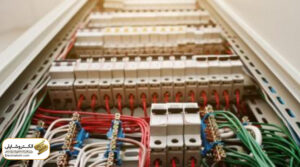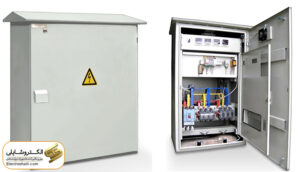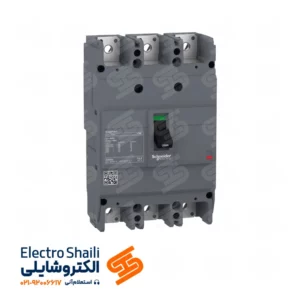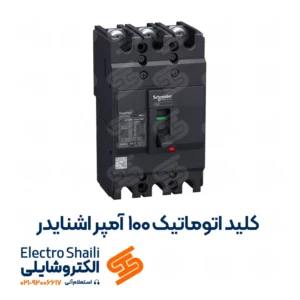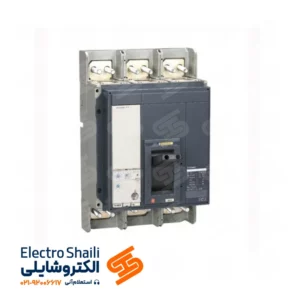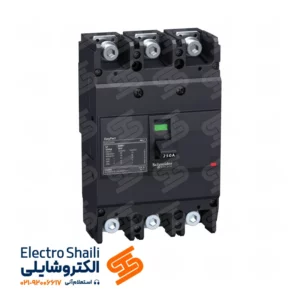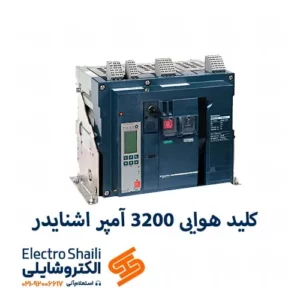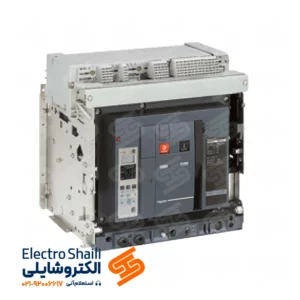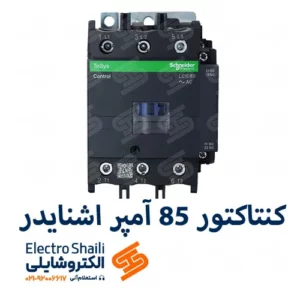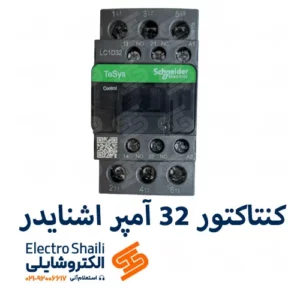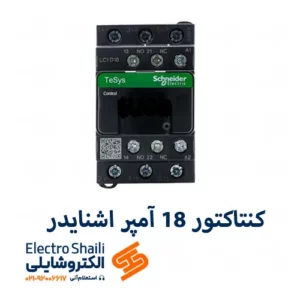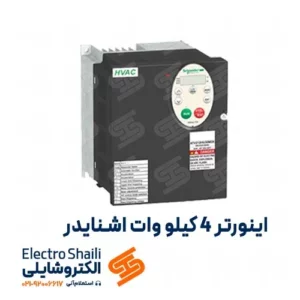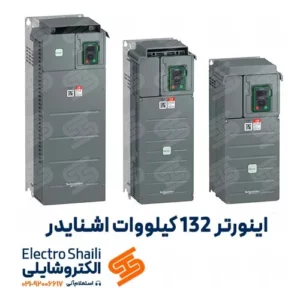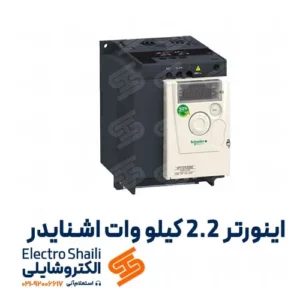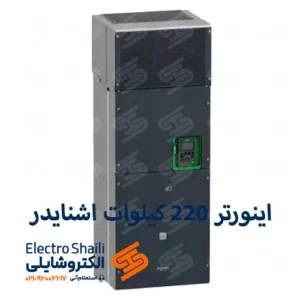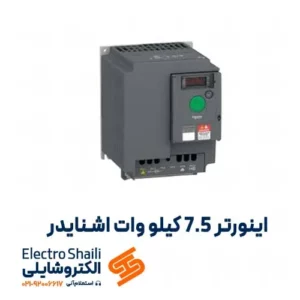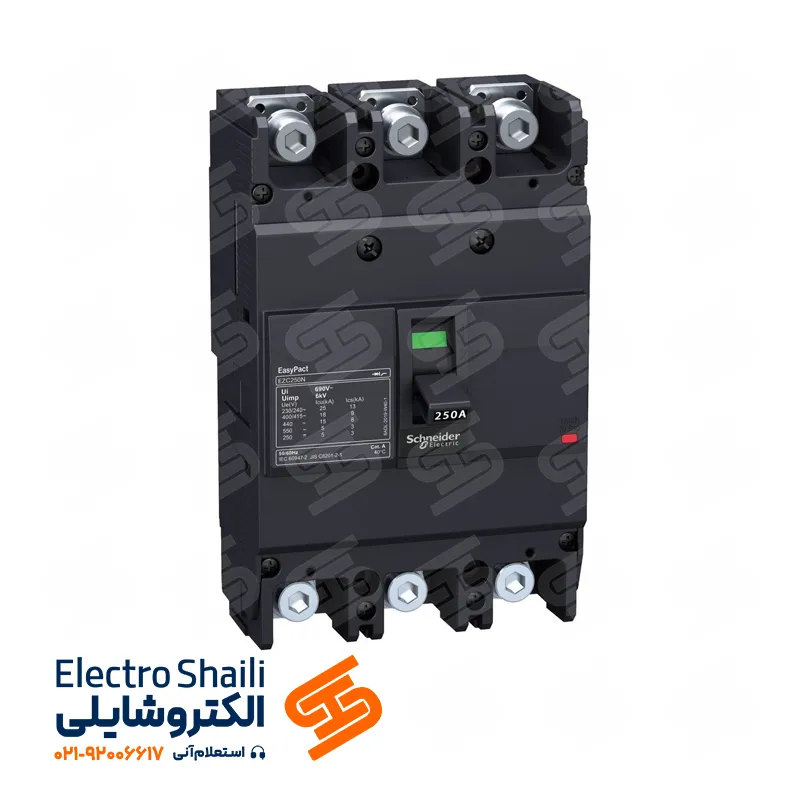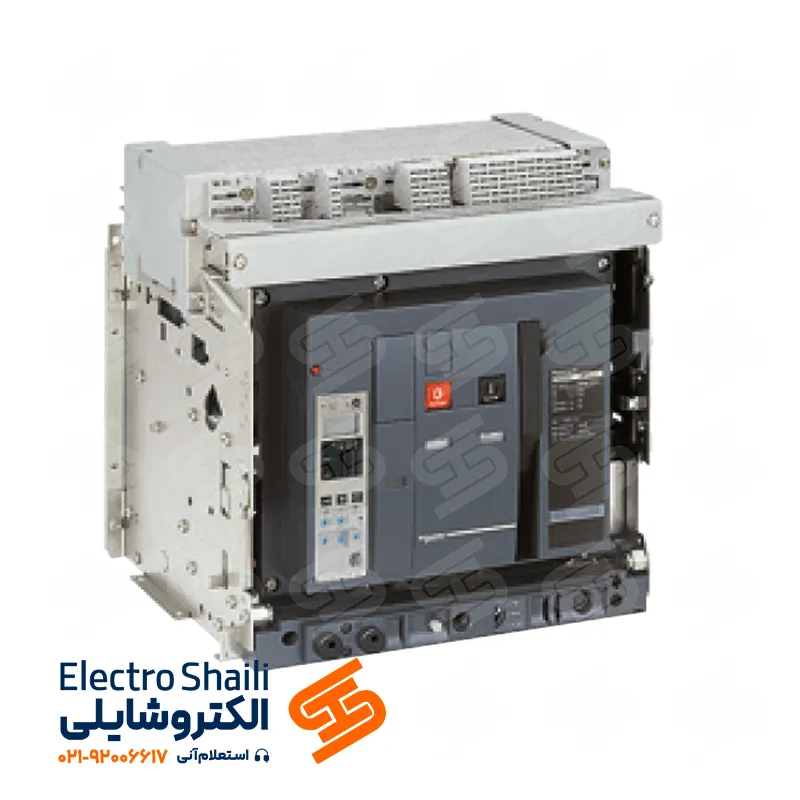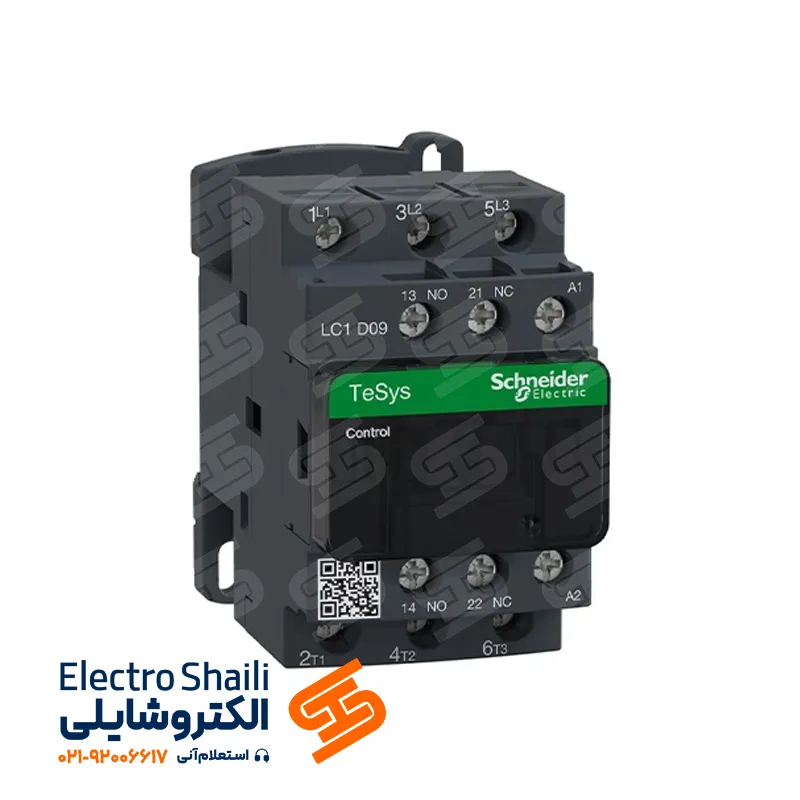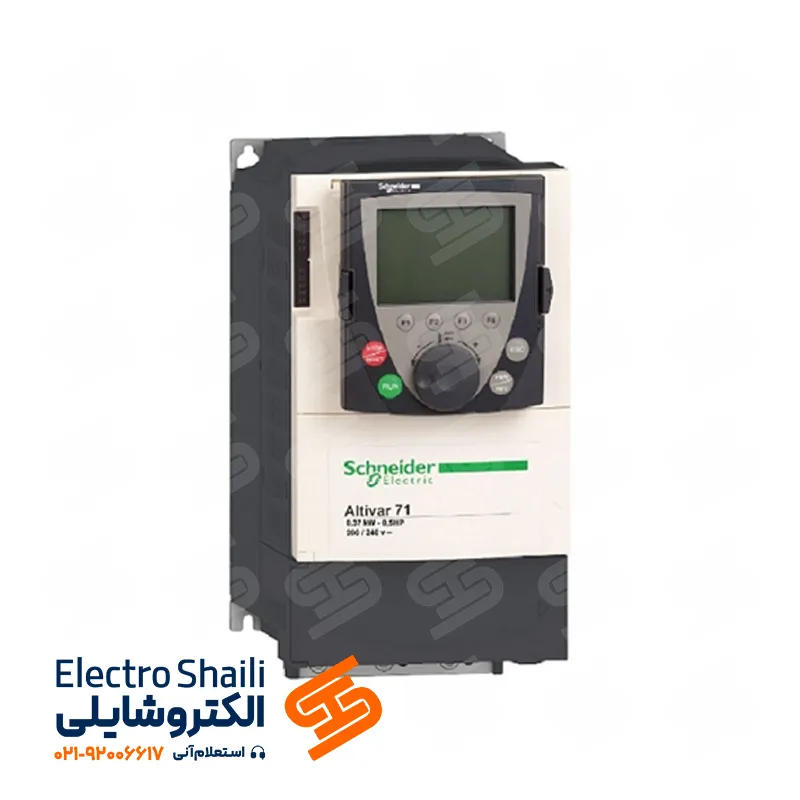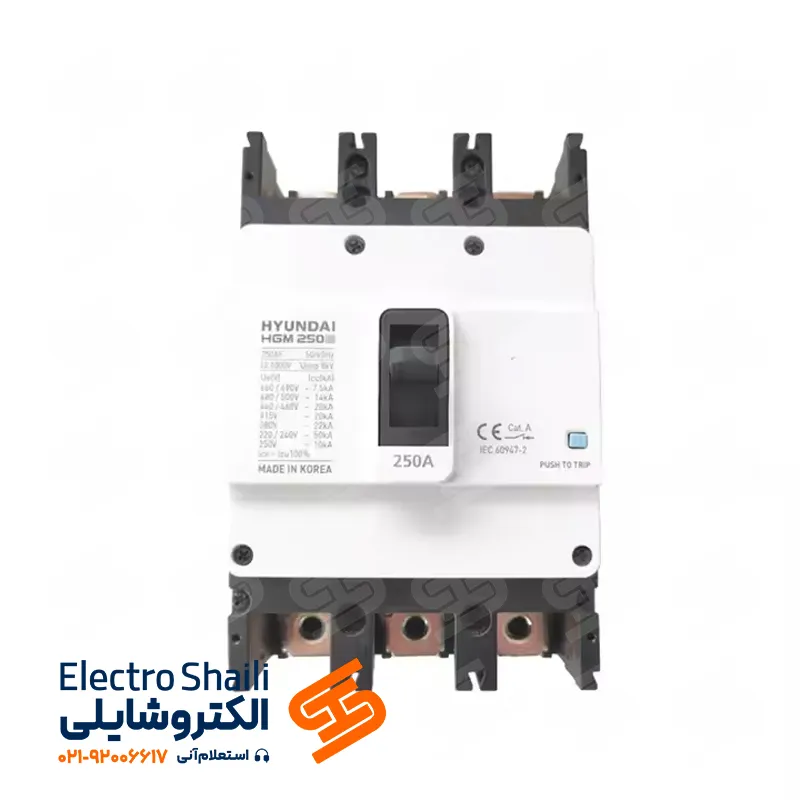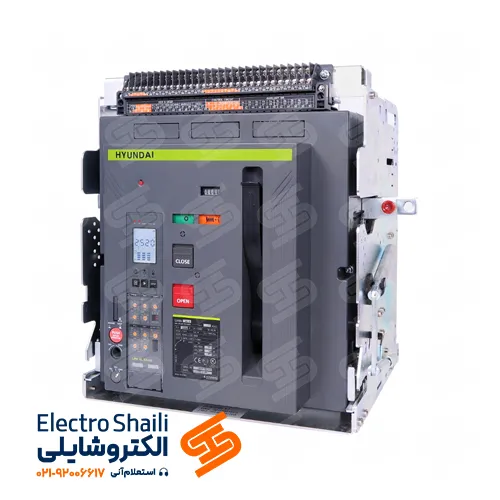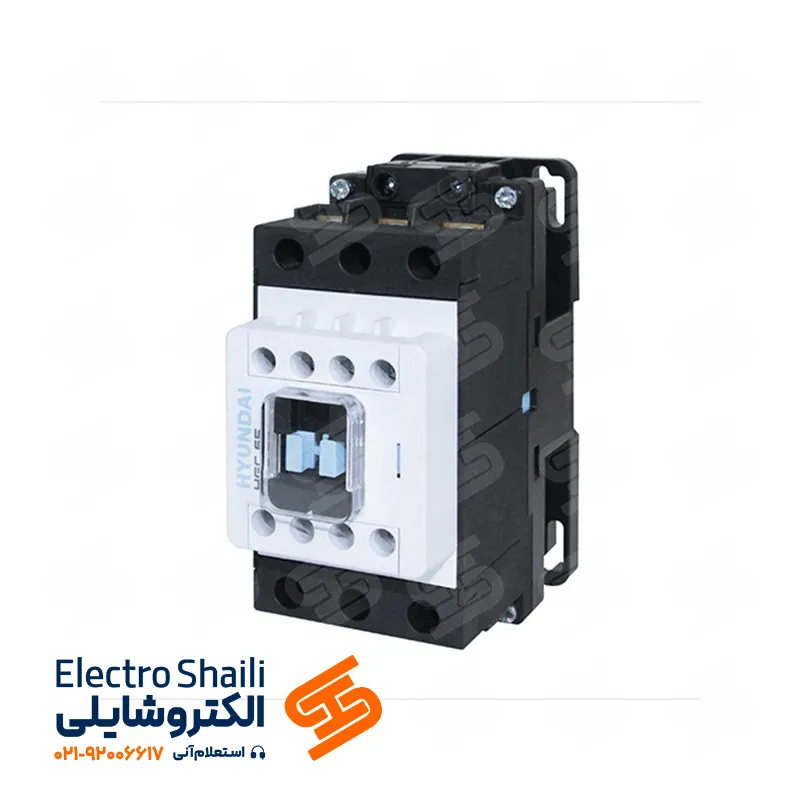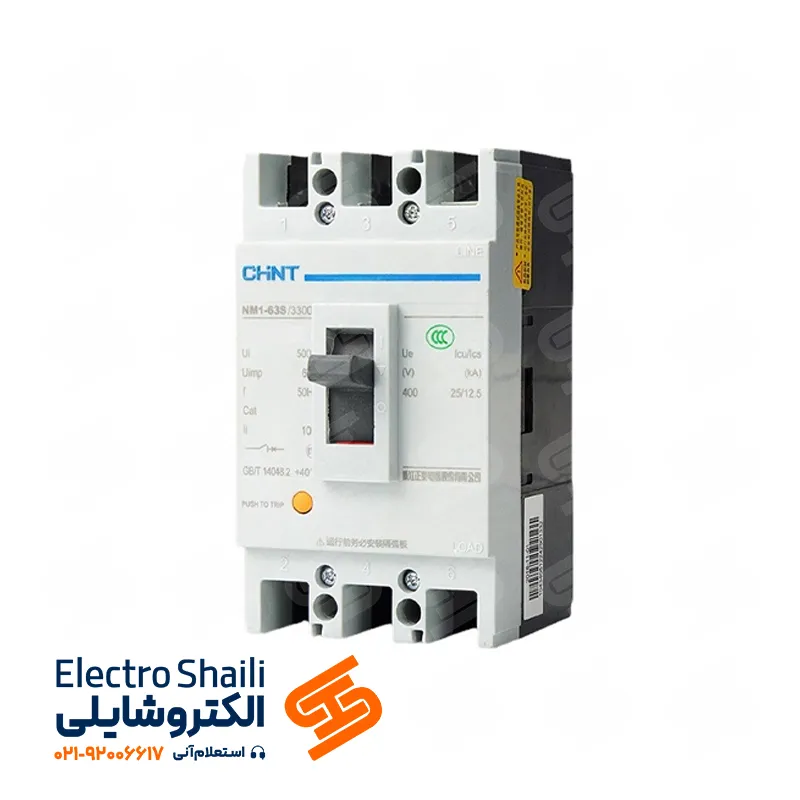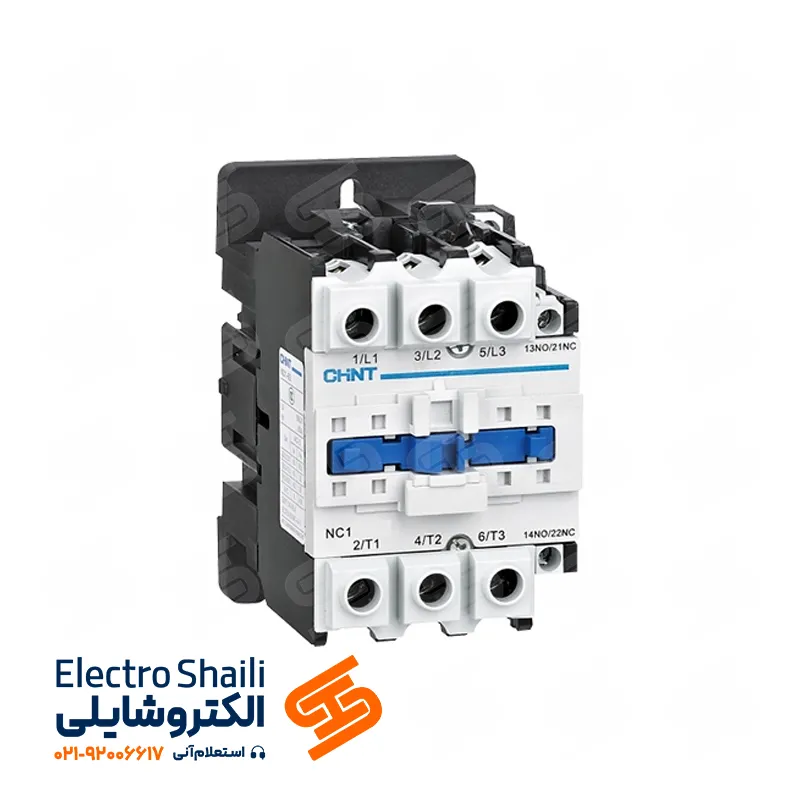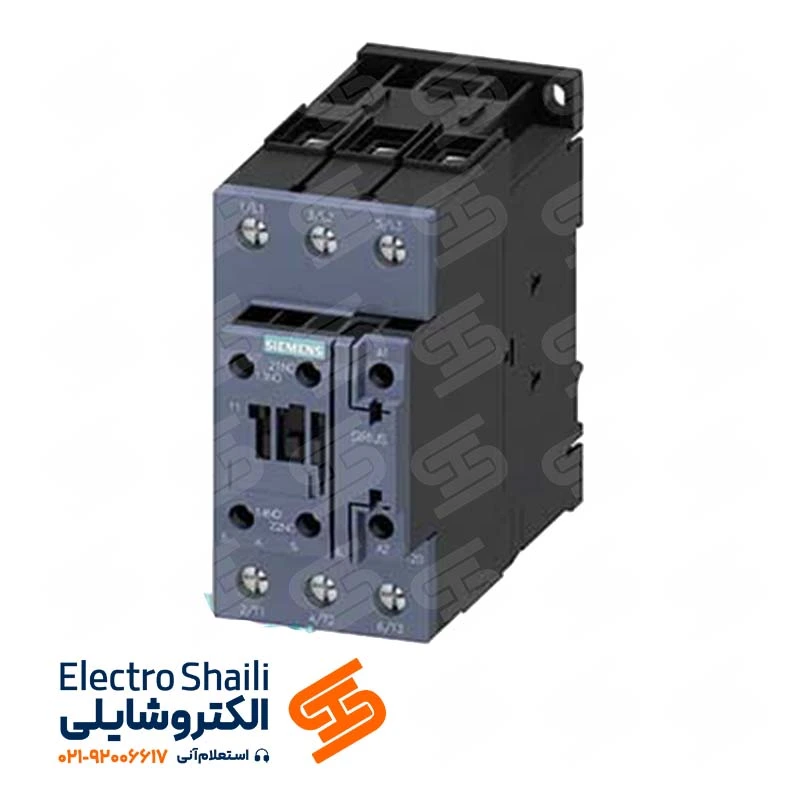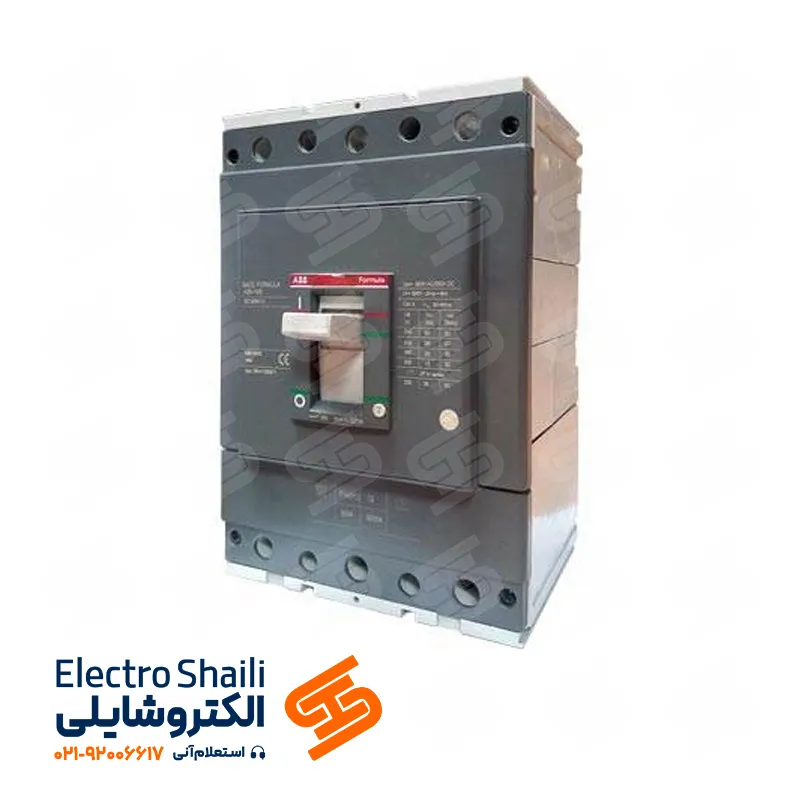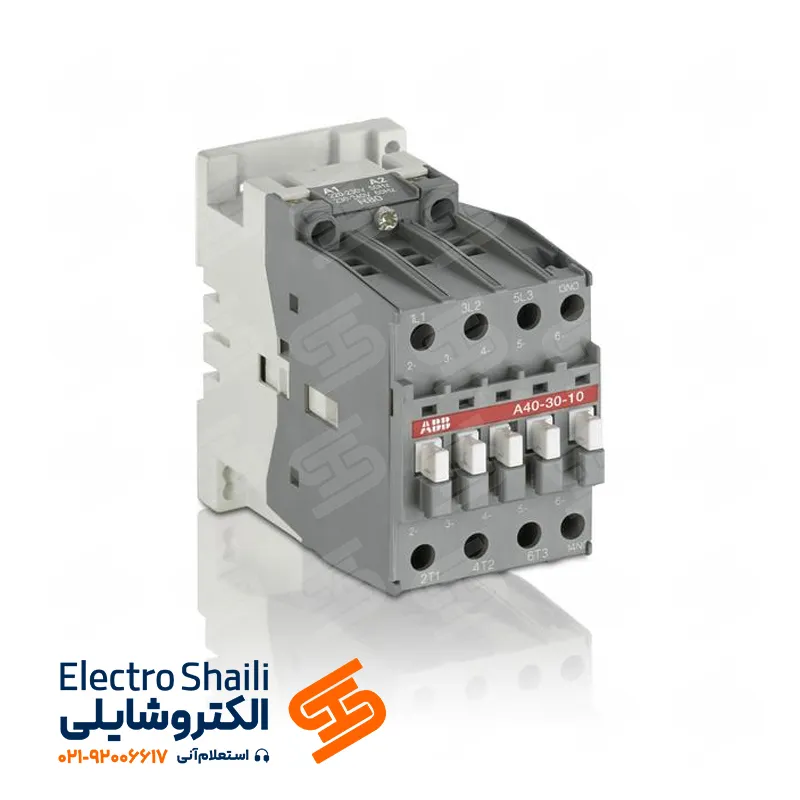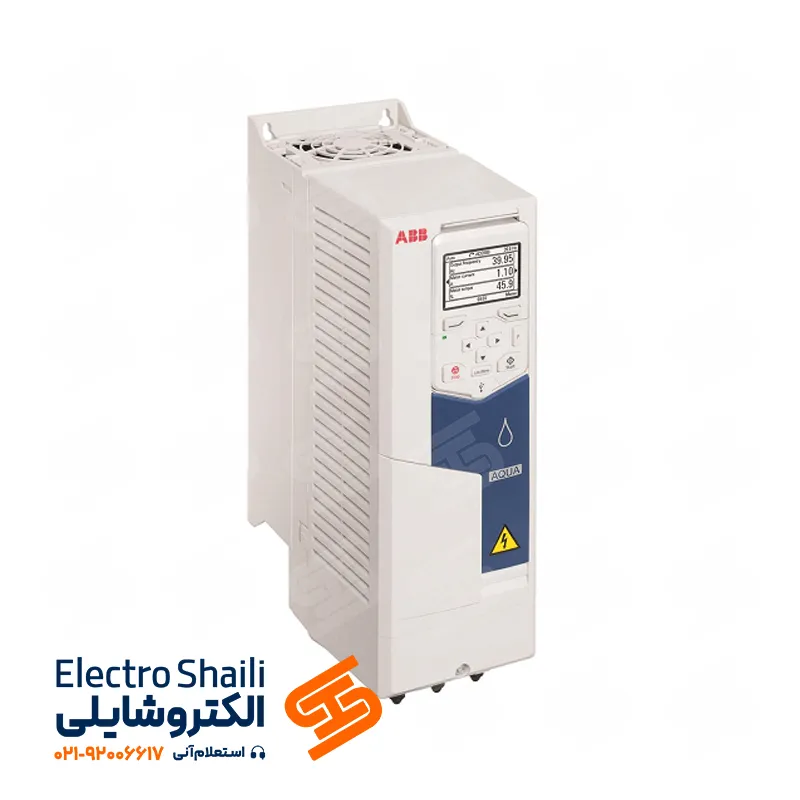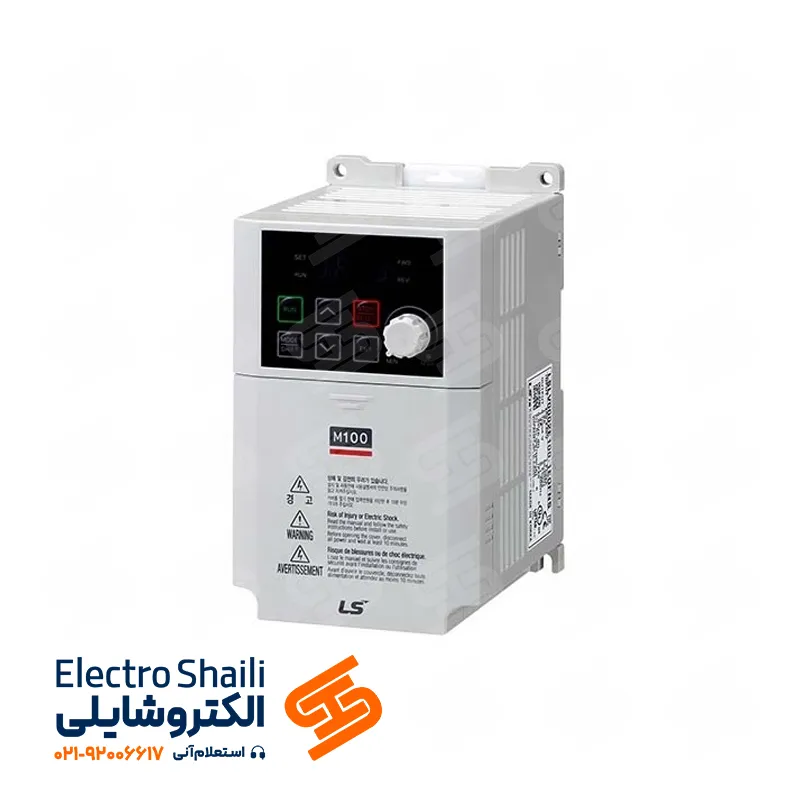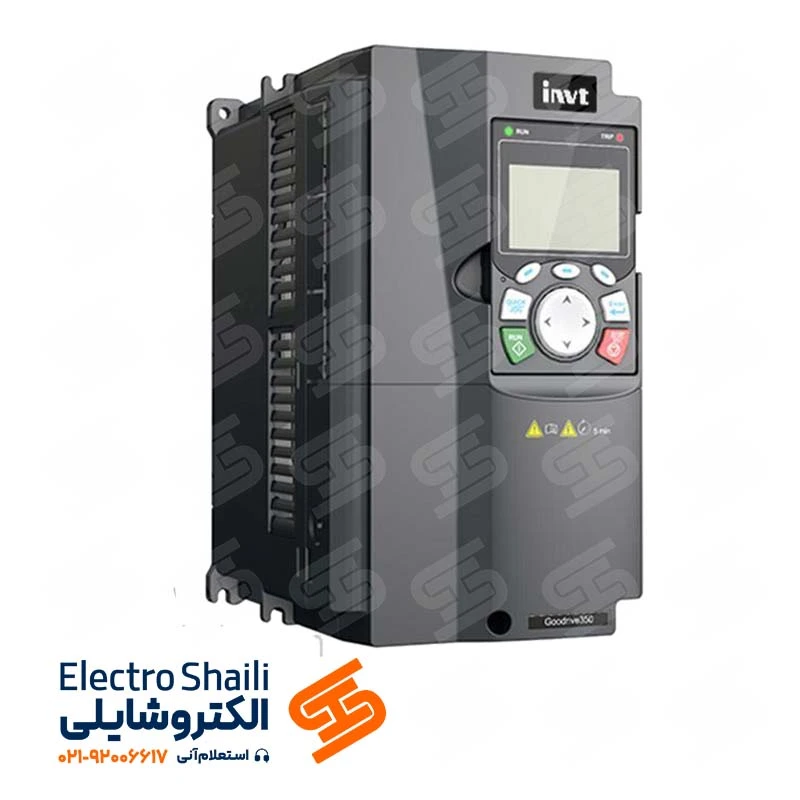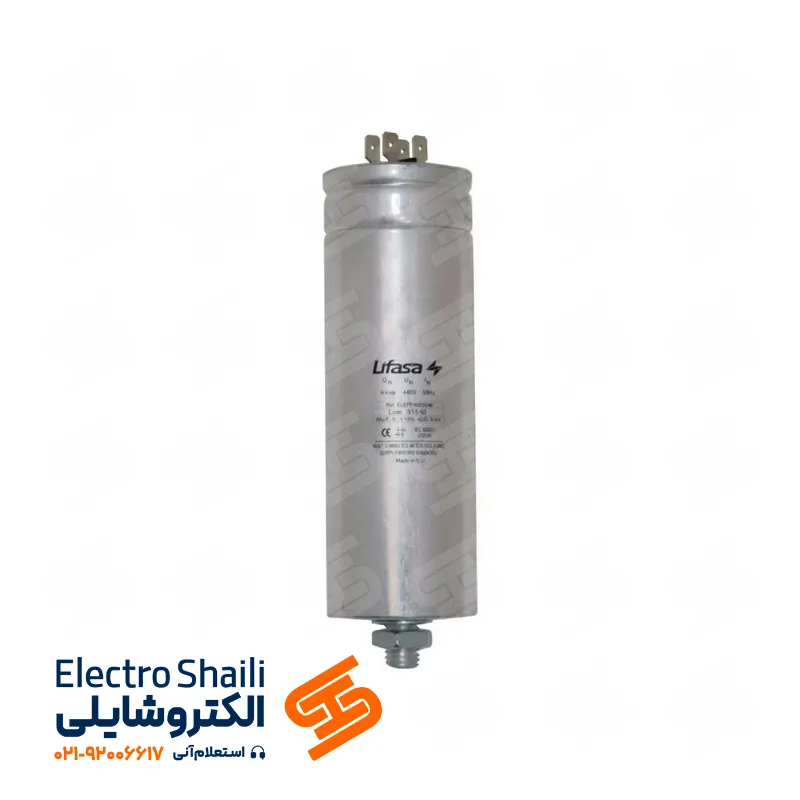Distribution Panel and its Types
The establishment of electricity in a building or industrial space is a crucial matter that requires attention to technical details. For this purpose, a distribution panel is introduced as a set of electrical equipment where devices related to the distribution and control of electrical energy are installed. These equipments may be installed in a closed metal space or other designated space, referred to as an electrical panel.
The use of distribution panels is of significant importance as their proper design prevents voltage drops, excess currents, and safety issues. Distribution panels come in various types based on the needs and specifications of the system.
Types of distribution panels include low-voltage panels, medium-voltage panels, and command distribution panels. Each of these types is used in different systems based on specific needs and conditions.
With technological advancements, modern distribution panels are equipped with intelligent features and advanced monitoring systems. These features allow system managers and maintenance personnel to improve system performance and respond quickly in emergency situations.
The importance of using distribution panels in industries, offices, and buildings is evident due to the enhanced efficiency of the electrical system and protection of electrical equipment more than ever before. Therefore, the selection and use of distribution panels, considering relevant needs and standards, are essential to ensure optimal system performance.
What is a Distribution Panel?
A distribution panel is a vital set of electrical equipment used for the distribution and control of electrical energy in various environments. This set is installed in a dedicated space, and various electrical equipment, including control and power supply equipment, is placed in it.
The definition of a distribution panel requires attention to technical details as this space is designed for the positioning of electrical equipment. These electrical equipment may be installed in a closed metal space or other types of spaces. The term “distribution panel” not only refers to a closed metal space but also to any space where electrical equipment is installed.
A distribution panel is embedded as an electrical or electronic cabinet, containing switches, control handles, and display tools. These electrical equipment in the distribution panel serve to prevent electric shocks to users and protect equipment against environmental conditions.
Reasons for Using Distribution Panels and Upgrading Equipment in an Environment:
The main purpose of using distribution panels is to create the possibility of secure and precise control and protection. These equipment provide continuous interconnection of electrical systems and ensure the most efficient use of these systems at the lowest possible cost.
Repair, service, and maintenance of equipment are made easy and fast through distribution panels. This capability allows managers and technicians to quickly and efficiently address technical issues and improve the performance of electrical systems.
In addition, ensuring system safety and protecting living beings are also among the important objectives of using distribution panels. These equipment implement safety and protection measures abundantly, preventing electrical hazards from entering the system. They also provide necessary safety measures for the safety of living beings in terms of safety.
Types of Electrical Panels Based on Voltage Levels
Electrical panels are divided into two main categories based on voltage levels:
1. Medium Voltage Electrical Panel: Overview of Features
Medium voltage electrical panels are primarily designed for voltage levels ranging from 1 to 36 kilovolts and are carefully assembled in a multi-cell configuration. These devices are crucial for managing the security and control of electrical systems at this voltage level.
Inside medium voltage panels, various components such as power switches or disconnectors, current and voltage measurement transformers, grounding disconnect switches, medium voltage contactors, relays, busbars, and various control equipment are installed. These components ensure precise and safe management of electrical systems at this voltage level and provide the capability for easy upgrades and servicing when needed.
2. Low Voltage Panel: IEC60439-1 Standard
A low voltage panel, in accordance with the IEC60439-1 standard, is a combined device consisting of one or more low voltage disconnect and connect devices along with control, measurement, indicator, protection, regulator, and other related equipment. These devices are fully installed and integrated, encompassing all internal electrical and mechanical connections and structural components.
Low voltage panels are used after converting high voltage to low voltage in transformer substations. Typically, the nominal voltage of these panels is in alternating current (AC) with a frequency of 1000Hz and, in direct current (DC), the nominal voltage does not exceed 1500V. The variety in consumer requirements dictates the size and design of low voltage panels, which are equipped with automatic or combination of switches, multiple fuses, measuring devices, and more for output circuits.
These panels are made of insulating materials, cast iron, and iron sheets and come in various forms, including wall-mounted, flush-mounted, surface-mounted, and free-standing for both open and covered spaces.
Types of Low Voltage Panels
Low voltage panels, with a voltage level less than 1000V, are often defined by nominal voltages up to 690V for alternating current and service voltage up to 500V. These panels are mostly produced in three common types:
a) Wall-Mounted Panel
b) Free-Standing Panel
c) Withdrawable Panel
Low voltage panels used in building electrical systems are categorized based on their role and location in the control and distribution system:
Main Low Voltage Panel:
This panel is directly connected to the power substation and low voltage transformer and is responsible for distributing and controlling power for the entire set.
Sub-Main Low Voltage Panels:
These panels distribute power to specific blocks or receive power from the main panel, serving independent building blocks or sections.
Branch Distribution Panels for Facilities and Equipment:
These panels are used in buildings, especially for distributing and controlling specific electrical systems such as motor rooms and kitchens, receiving power from the main panel.
Lighting Sub-Distribution Panel:
These panels are used for distributing and controlling power for lighting and general outlets, receiving power from the main panel.
Types of Electrical Panels Based on Application
1. Power and Lighting Distribution Panel for Outdoor Installation
2. Fully Enclosed Panel (For installation in covered spaces)
a) Free-Standing Fully Enclosed Panel:
This type of panel is installed independently on the ground or building floor without relying on a wall. It is suitable for spaces without covered walls.
b) Wall-Mounted Fully Enclosed Panel:
This wall-mounted panel is installed as a surface-mounted or flush-mounted device and comes in various dimensions. Access to this panel is possible from its front side. It is suitable for controlling sub-circuits, lighting, and power, including busbars, switches, and protection equipment against load increases.
Electrical Distribution Panels: Free-Standing Enclosed Types – Classification and Features
Free-standing enclosed electrical distribution panels are one of the most commonly used types of panels in electrical systems, and they come in various categories, as detailed below.
1. Front-Accessible Free-Standing Electrical Distribution Panel:
In this type of panel, access to controls, fuse replacement, equipment connections, cable inputs and outputs, wires, etc., is only possible from the front of the panel. This panel may consist of one or multiple cells.
In this case, usually, a small door, called a “side door,” is installed next to the main door of the panel, and cable connections to feeders are done through this side door. The entry of cable inputs and outputs into the cells can be either from the top or bottom.
2. Rear-Accessible Free-Standing Electrical Distribution Panel:
In rear-accessible distribution panels, access for equipment and cable connections is possible from the back of the panel. These panels are designed for front-side operations for measurement and control processes. This arrangement facilitates ease of repairs and technical changes while allowing cable and connection management from the back of the panel.
3. Multi-Compartment Free-Standing Enclosed Electrical Distribution Panel:
In multi-compartment free-standing enclosed panels, each cell has different controls for machinery, various switches, fuses, measuring devices, vertical busbars, and customizable housings. These panels have a main horizontal busbar allowing expansion to multiple cells, enhancing flexibility and accommodating various settings in the power distribution system.
4. Multi-Box Free-Standing Enclosed Electrical Distribution Panel:
Multi-box free-standing enclosed distribution panels consist of components such as busbars, fuses, switches, etc., and each of these components is housed in equal sections of cast iron or steel boxes. These boxes are interconnected to form the distribution panel. This design creates a sturdy and reliable structure for the distribution panel.
Types of Wall-Mounted Enclosed Electrical Distribution Panels
Wall-mounted panel installed in a surface-mounted manner:
In this type of panel, it is installed on the wall in a surface-mounted fashion. This installation style enhances ease of access to equipment and facilitates repairs.
Wall-mounted panel installed in a flush-mounted manner:
In this case, the panel is installed on the wall and protrudes in a flush-mounted manner, without any coverage from the wall. This installation adds an aesthetically pleasing and modern appearance to the panel while maintaining access to equipment.
Classification of Electrical Distribution Panels Based on Installation Method
Main Low Voltage Power Distribution Panel:
– Front-Accessible Free-Standing
– Rear-Accessible Free-Standing
Sub-Main Low Voltage Power Distribution Panel:
– Front-Accessible Free-Standing
– Rear-Accessible Free-Standing
Main Low Voltage Power Distribution Panel:
– Multi-Compartment Free-Standing
Sub-Main Low Voltage Power Distribution Panel:
– Multi-Compartment Free-Standing
Low Voltage Power Distribution Panel:
– Multi-Box Free-Standing
Secondary Power and Lighting Distribution Panel:
– Wall-Mounted
Power and Lighting Distribution Panel:
– Outdoor Installation
Summary of Types of Electrical Distribution Panels
In this article from ElectraShaili, various concepts and different types of electrical panels were explored. The definition of electrical panels and their importance in energy distribution was explained. The types of panels were examined in terms of voltage levels, installation methods, and applications in different electrical systems. Choosing and using the appropriate electrical panels, based on the diverse needs of industries and buildings, ensures safety and efficiency in power distribution.


